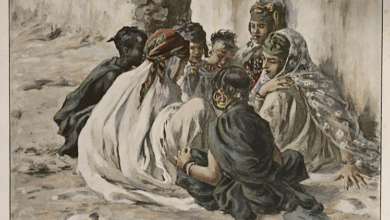
A state of emergency was declared in Australia’s most populated region on Thursday as an unprecedented heatwave fanned out-of-control bushfires, destroying homes and smothering huge areas with a toxic smoke.
As thousands of firefighters battled blazes, temperatures neared 50 degrees Celsius (122 degrees Fahrenheit) in some places and authorities warned the extreme weather conditions could get even worse.
Australia endures bushfires every year but the early and intense start to this season, along with the record temperatures, has fuelled concerns about global warming.
In New South Wales, Australia’s most populated state with Sydney as its capital, more than 100 bushfires were burning on Thursday, many of them out of control.
New South Wales premier Gladys Berejiklian declared a seven-day state of emergency, the second since the bushfire season began early in September, due to “catastrophic weather conditions”.
At Buxton, about 100 kilometres (62 miles) southwest of Sydney, longtime resident Paul Collins said a nearby bushfire that had destroyed dozens of buildings was “much worse” than in past years.
“It’s spread faster with the wind, and the bush and the ground is just so dry,” Collins told AFP, blaming climate change and a long-running drought for the worsening fires.
“It’s just a horrendous situation, really.”
At least 20 houses were destroyed in New South Wales on Thursday, according to national broadcaster the ABC.
Meanwhile, the roughly five million people of Sydney continued to choke on smoke from a “mega-blaze” ringing the city.
Public health emergency
Leading doctors have warned the smoke, which has shrouded Sydney for weeks, has created a “public health emergency”.
Hospitals have been recording large increases in emergency room visits for respiratory problems.
Vulnerable people in New South Wales have been urged by authorities to stay indoors amid worries the scorching heat combined with the toxic smoke could cause “severe illness, hospital admissions and even death”.
The heatwave has led to a series of extraordinary records.
Australia endured a national maximum temperature of 41.9 degrees Celsius (107.4 degrees Fahrenheit) on Wednesday, a full degree higher than the previous record set just one day earlier.
Until this week, the record high had been 40.3 C in January 2013.
Bureau of Meteorology forecaster Dean Narramore said the “dangerous and disastrous” heatwave was toppling dozens of “extraordinary” records across the country.
“We’re heading into a fifth or sixth day in a row where multiple places broke a record. And we’re likely to see 30 or 40 records around the country break,” he told the ABC.
Climate protests
The fires have sparked protests targeting Australia’s conservative government, which environmentalists accuse of promoting coal and other industries that belch out greenhouse gases that cause global warming.
On Thursday hundreds of climate protesters marched on Prime Minister Scott Morrison’s official residence in Sydney to demand curbs on greenhouse gas emissions.
They also sought to highlight his absence on an overseas holiday as large parts of the country burn.
Scientists say the blazes have come earlier and with more intensity than usual due to global warming and the prolonged drought that has left the land tinder dry.
Meanwhile, exhausted firefighters continued their battle on Thursday.
NSW Rural Fire Service commissioner Shane Fitzsimmons said a crew of five firefighters battling a “fast-moving” blaze had been injured after being “enveloped” by flames.
Two seriously injured men had been airlifted to a specialist burns unit and a woman was rushed to a nearby hospital.
Fitzsimmons said some firefighters had been left “shattered” after losing their own homes while saving other properties.
“They and their families and colleagues are truly devastated by the loss,” he said. “It will be another very emotional, very draining day for our firefighters.”
Aside from New South Wales, more than 70 fires are raging across Queensland state to the north. Bushfires are also burning in Western Australia and South Australia.
At least three million hectares (7.4 million acres) of land has been torched across Australia in recent months, with six people killed and more than 800 homes destroyed.
Reporting by AFP
Image: Bushfires in Australia have destroyed hundreds of homes and claimed six lives (AFP/Peter Parks)




